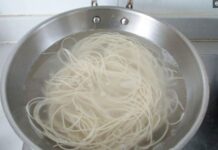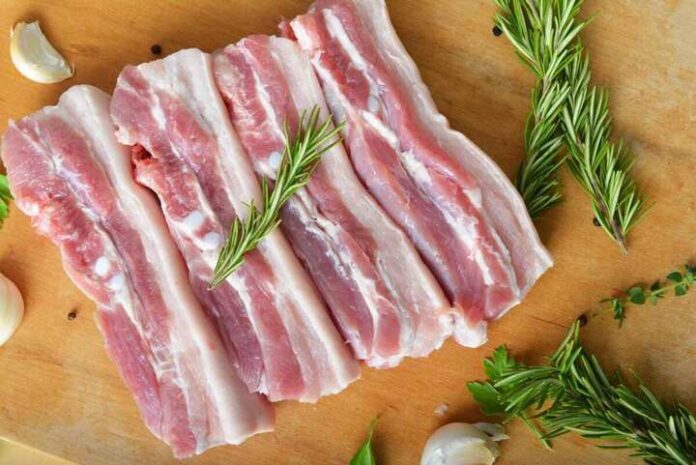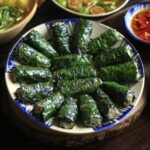Pork is a staple food in the daily diet of many Vietnamese families. However, consumers have long been concerned about unsafe pork due to the presence of growth promoters, antibiotics, or other toxic chemicals. Choosing good quality, safe pork is a top priority for homemakers.
Tips for selecting fresh and safe pork
Here are some ways to identify clean, fresh pork that is free from banned substances, ensuring a safe family meal.
Observe the color
Fresh and clean pork usually has a light pink or bright red color. The fat is white or slightly yellow. Notably, when you press it, the meat is elastic and does not leave an indentation or release water.
On the contrary, meat with preservatives or that has been stored for a long time often has a darker color, a slight greenish tinge, or even turns black. The fat on the meat will also change color, no longer white but possibly turning a dark yellow or gray. Poor-quality meat is usually soft and lacks elasticity.
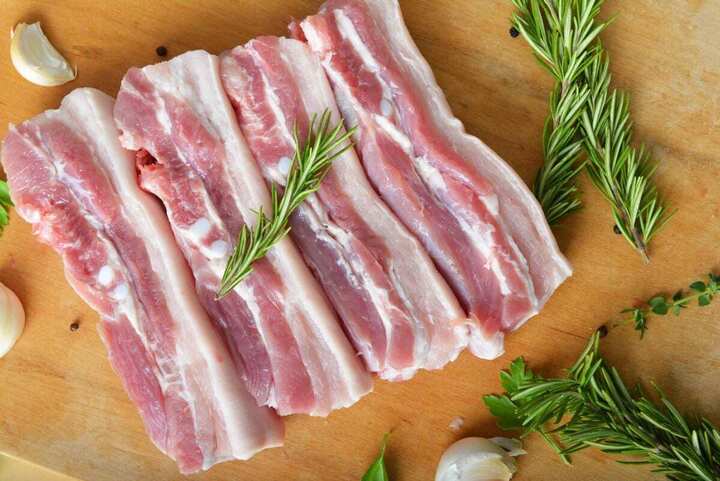 Fresh pork, free from banned substances, usually has a light pink or bright red color. (Photo: Brakes)
Fresh pork, free from banned substances, usually has a light pink or bright red color. (Photo: Brakes)
Pay attention to the smell
Good quality pork will have a mild, natural, and characteristic aroma. On the other hand, spoiled or chemically treated pork often has an unusual, fishy, or sometimes overpowering smell. To test, bring the piece of meat close to your nose; if the meat has a mild, fresh scent, it is safe. If you notice any strange smells or feel uncomfortable, do not buy it.
Check the elasticity
Another tip for choosing good pork is to feel its elasticity by gently pressing on the meat. Fresh pork will immediately bounce back when pressed, leaving no indentation. If the meat shows an indentation or does not recover its original shape, it may have been frozen or is not fresh.
Additionally, when holding a piece of fresh meat, you will feel that it is dry, not sticky, and shows no sign of water release. Meat injected with chemicals often feels slippery or wet because preservatives make the meat soft and reduce its natural elasticity.
Examine the fat and skin
Pork that is free from banned substances usually has a layer of fat about 1-2 cm thick and is naturally off-white. The pig’s skin is also soft, not too thick, and has a natural color. Pork containing leanness-enhancing agents often has a very thin layer of fat, and the skin is usually soft and flabby or sometimes thicker than normal.
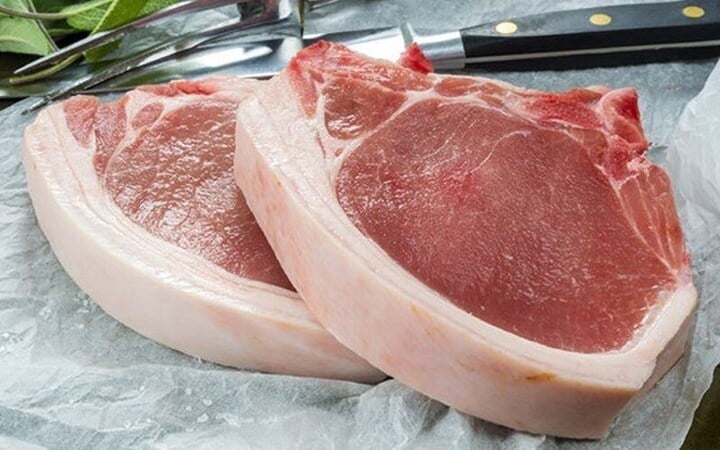 Pork that is free from banned substances usually has a layer of fat about 1-2 cm thick and is naturally off-white. (Photo: The Kitchn)
Pork that is free from banned substances usually has a layer of fat about 1-2 cm thick and is naturally off-white. (Photo: The Kitchn)
Consider the product’s origin
One tip for buying good quality pork, free from banned substances, is to go to reputable stores that provide meat with clear origins and certified food hygiene and safety. Pork with complete labels, including information on origin, production date, and expiration date, is more reliable.
In large supermarkets or safe markets, pork is usually packaged cleanly and clearly labeled. The health inspection marks on the meat also help determine that it has been inspected and is safe.
Consider the price
Price is also a factor to consider. Safe, high-quality pork tends to be more expensive due to the natural feeding process, free from chemicals. If you come across pork that is much cheaper than the market price, it may be unsafe and of questionable quality.
Consumers should be cautious when encountering cheap meat sold in traditional markets, as it may be from dead pigs, long-stored meat, or chemically treated to retain color and freshness.
Precautions when choosing ground or marinated pork
For pre-processed meats such as ground or marinated pork, it is advisable to purchase them from reputable sources to ensure they are not mixed with other meats or treated with chemicals. Fresh ground pork usually has a natural pink color, not too pale, and has no strange odor. Processed meat, when stored for a long time, will become slippery and emit an unpleasant smell.
Identifying diseased pork
Pork carrying pathogens is very dangerous and can even threaten consumers’ lives, but some unscrupulous sellers still try to sell it. Here are the signs to look out for:
– Pigs infected with cysticercosis (rice grain disease): Visible signs include oval white spots the size of beans or grains of rice.
– Pigs with salmonellosis: Exhibiting bruise-like hemorrhagic spots or bruises, soft meat, and purple ears.
– Pigs with cholera: Showing mosquito-bite-like hemorrhagic spots under the skin or on the ear rim.
– Pigs with bacillary hemoglobinuria: The meat shows blood accumulation or bruise-like patches.
According to VTC News
The Ultimate Guide to Cooking Pork: How to Detox and Tenderize for a Flavorful, Peace-of-Mind Experience.
When it comes to boiling pork, there’s a simple way to make your dish absolutely mouth-watering. Imagine transforming this humble cut of meat into a flavorsome masterpiece with just a few easy steps. This tried-and-true method will have your taste buds tantalized and your guests begging for more. Get ready to take your pork game to the next level!













